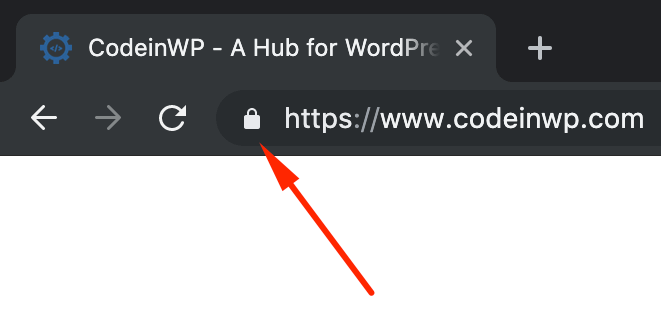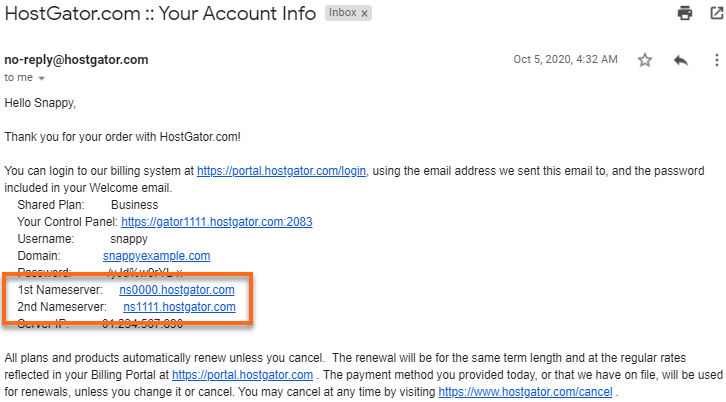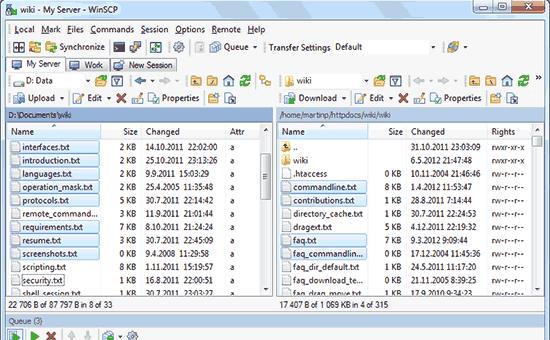
FTP (file transfer protocol) is the standard protocol used to transfer computer files between a server and a client. It uses separate data and control connections. It is used often to transfer large files like videos from one machine to another. It is based on the client-server model.
Passive mode ftp server
Passive mode allows FTP clients and servers to bypass firewalls that filter out incoming connections. Passive mode uses two random unprivileged ports to enable the transfer of data between the client and the server. If you're using WinSCP, passive mode is the default setting.

Active mode ftp server
An Active mode FTP client is different from a passive mode. Active mode lets the client send a port to the server. The server then connects to the client. In passive mode, the server opens port and waits for clients to connect.
File transfer protocol (FTP)
File Transfer Protocol (FTP), servers can be used to store or transfer data between clients. The protocol is a standard communication protocol that allows for the transfer of computer files. To transfer data from one end of the network to another, it uses separate data and control connections.
NATs
FTP server NATs can be a complex issue due to many reasons. The routing devices should be able to interpret the protocol and modify the control connection dynamically. Moreover, they must also maintain state information for data connections. This way, packets arriving at an acceptable external address are transparently rerouted to the internal server.
Firewalls
There are two kinds of firewalls, one on the client and one at the server. The former is for servers running in private networks, while the latter is for servers on public networks. The main difference between these two is that the former denies all traffic except well-known ports. FTP clients are unable to connect to the server.

Protocol client-server
FTP is a client/server protocol which allows users the ability to send and get files from one system to another. FTP supports two modes. ASCII for text uses 8-bits, while binary for images uses 36-bit words. You can specify both modes in the server's settings, or in an allow rule. ASCII mode means that the sending machine sends a file byte by byte and the recipient stores it once it has received it.
FAQ
How to Make a Static Site
There are two options for creating your first website:
-
Content Management System (a.k.a. WordPress): WordPress): You can download this software and install it on your computer. This will allow you to create an essential website.
-
You will need to create a static HTML website. This is easy if you know HTML.
It is worth hiring an expert if you want to build large websites.
Start by choosing option 2.
What Should I Include in My Portfolio?
These things should make up your portfolio.
-
Exemplaires of previous work
-
If applicable, links to your website
-
Links to your blog.
-
Links to social media profiles
-
You can also find links to other designers' portfolios online.
-
Any awards you have been given.
-
References.
-
You can also send us samples of your work.
-
These are links showing you how to communicate effectively with clients.
-
These are links that show you're open to learning new technologies.
-
You are flexible, these links will show it.
-
Your personality is displayed in the links
-
Videos showing your skills.
How much do web developers make?
The hourly rate for a website you create yourself is $60-$80. But if you want to charge a lot more, you should consider becoming an independent contractor. You could potentially charge anywhere from $150-200 per hour.
What kind of websites should I make?
This question is dependent on your goals. Your website should be able to sell products online. This will allow you to build a successful business. This can only be achieved by building a solid eCommerce website.
Blogs are another popular type of website. Each one of these websites requires different skills. For instance, if you want to set up a blog, you will need to learn about blogging platforms such as WordPress or Blogger.
You must decide how to personalize your site's appearance when choosing a platform. You can find many free templates and themes for every platform.
Once you've selected a platform to build your website, you can start adding content. Your pages can be filled with images, videos and text.
It is now possible to publish your new website online. Once published, visitors can view your site in their browsers.
How do I create a free website?
It all depends on which type of website it is. Are you looking to sell products, build a website, or create a portfolio online?
An essential website can be created using HTML and CSS. This is a combination of HyperText Markup Language (HTML) and CascadingStyle Sheets (CSS). It is possible to make a basic website with HTML and CSS. However, many web developers recommend using a WYSIWYG editor, such as Frontpage or Dreamweaver.
Hire a freelance web developer if your skills are not in-depth. They can help you create a custom website based on your needs.
A freelance developer may charge you either a flat-fee per project, or an hourly fee. The cost of hiring a freelancer varies depending on how much work they complete within a given timeframe.
For example, some companies charge $50-$100 per hour. Larger projects will usually attract higher rates.
In addition, many freelance websites list available jobs. You can also search on those websites before you reach out to developers.
Statistics
- It's estimated that chatbots could reduce this by 30%. Gone are the days when chatbots were mere gimmicks – now, they're becoming ever more essential to customer-facing services. (websitebuilderexpert.com)
- Did you know videos can boost organic search traffic to your website by 157%? (wix.com)
- In fact, according to Color Matters, a signature color can boost brand recognition by 80%. There's a lot of psychology behind people's perception of color, so it's important to understand how it's used with your industry. (websitebuilderexpert.com)
- Studies show that 77% of satisfied customers will recommend your business or service to a friend after having a positive experience. (wix.com)
- Is your web design optimized for mobile? Over 50% of internet users browse websites using a mobile device. (wix.com)
External Links
How To
What is Website Hosting?
Website hosting refers simply to the place that people visit when they visit a website. There are two types.
-
Shared hosting - This is the cheapest option. Your website files will reside on a server belonging to someone else. When customers visit your site, their requests travel over the Internet to that server. The server owner then forwards the request to you.
-
Dedicated hosting is the most expensive option. Your website is only accessible from one server. There are no other websites sharing space on the server. Your traffic remains private.
Because it is less expensive than dedicated hosting, shared hosting is preferred by many businesses. You can use shared hosting if the company owns the server to provide the resources required for your website.
However, both have their advantages and disadvantages. Here are the differences:
Sharing Hosting Pros
-
Lower Cost
-
Easy to Setup
-
Regular Updates
-
It can Be Found On Many Web Hosting Companies
Shared hosting can often cost as little as $10/month. This price often includes bandwidth. Bandwidth refers to the amount of data you can transfer across the Internet. Even if you upload only photos to your blog you might still have to pay more for large amounts of data that you transfer through your account.
You'll soon discover why you paid so much more for your previous host when you get started. The majority of shared hosts offer limited customer support. While they may occasionally assist you in setting up your site and other tasks, after that you are all on your own.
You'll want to look into a provider that offers 24-hour phone support. They'll take care of any issues that come up while you sleep.
Cons of dedicated hosting
-
More Expensive
-
Less Common
-
Requires Special Skills
With dedicated hosting, everything you need for your website is at your fingertips. You won't have to worry about whether you're using enough bandwidth or whether you've got enough RAM (random access memory).
This means that you will have to pay a little more upfront. You'll soon realize that your business is self-sufficient once it's online. You will become an expert in managing your servers.
So Which Is Better For My Business?
The answer will depend on the type and purpose of your website. If you only want to sell products, then shared hosting might be the best choice. It's very easy to setup and maintain. Because you share a server, you will most likely receive frequent updates.
However, dedicated hosting can be a great option if you're looking to build a community around the brand. You can put your efforts into building your brand, and not worry about how to handle your traffic.
Bluehost.com offers both. They offer unlimited monthly data transfers, 24/7 support, free domain name registration, and a 30-day money-back guarantee.